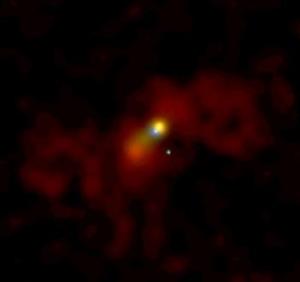
Life as we know has certain ingredients which are necessary for life to evolve and even exist. Such ingredients are the molecules methanimine and hydrogen cyanide — two ingredients that build life-forming amino acids.
Researchers found these molecules in a galaxy somewhere 250 million light years away; it’s not as a few more light years is going to make a big difference. Anyway when they are combined with water they form glycene, the simplest amino acid and a building block of life on Earth. The Arecibo astronomers focused on the distant galaxy Arp 220, an ultra-luminous starburst galaxy, because it forms new stars at a very high rate. They used the 305-meter, or 1,000-foot diameter, Arecibo radio telescope, the world’s largest and most sensitive, to observe the galaxy at different frequencies.
These molecules were find using a technology which involves radio emission at specific frequencies. Each chemical substance has its own radio frequency which is unique; in a way it is its fingerprint. “We weren’t targeting any particular molecule, so we didn’t know what we were going to find — we just started searching, and what we found was incredibly exciting,” said Tapasi Ghosh, an Arecibo astronomer.
“The fact that we can observe these substances at such a vast distance means that there are huge amounts of them in Arp 220,” said Emmanuel Momjian, a former Arecibo astronomer, now at the National Radio Astronomy Observatory in Socorro, N.M. “It is indeed very intriguing to find that the ingredients of life appear in large quantities where new stars and planets are born.”
Well this sounds promising in a way. Alas there is only so much you can do when you are 250 million light years away.









